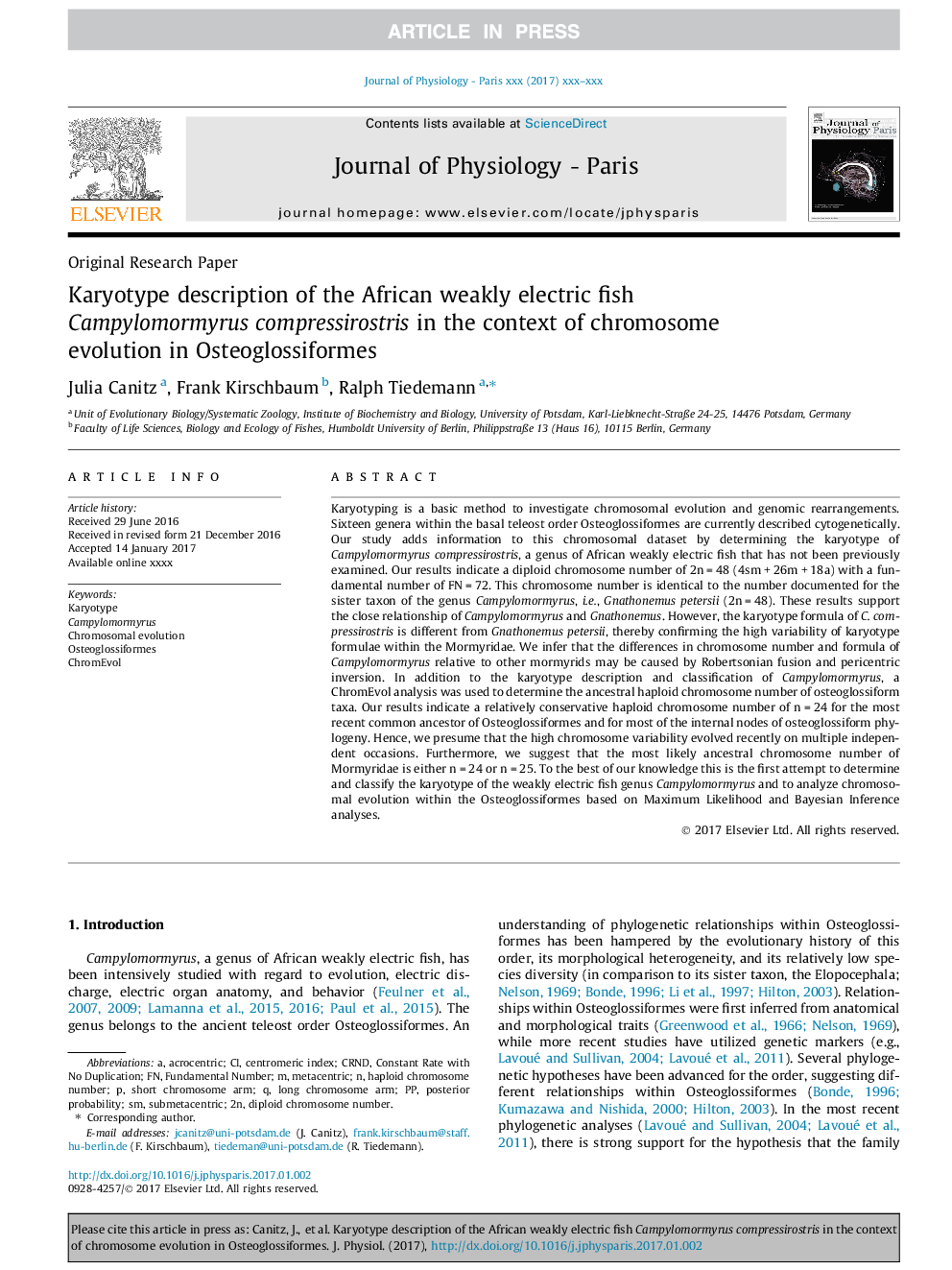| کد مقاله | کد نشریه | سال انتشار | مقاله انگلیسی | نسخه تمام متن |
|---|---|---|---|---|
| 5593272 | 1405073 | 2016 | 8 صفحه PDF | دانلود رایگان |
عنوان انگلیسی مقاله ISI
Karyotype description of the African weakly electric fish Campylomormyrus compressirostris in the context of chromosome evolution in Osteoglossiformes
دانلود مقاله + سفارش ترجمه
دانلود مقاله ISI انگلیسی
رایگان برای ایرانیان
کلمات کلیدی
موضوعات مرتبط
علوم زیستی و بیوفناوری
بیوشیمی، ژنتیک و زیست شناسی مولکولی
فیزیولوژی
پیش نمایش صفحه اول مقاله

چکیده انگلیسی
Karyotyping is a basic method to investigate chromosomal evolution and genomic rearrangements. Sixteen genera within the basal teleost order Osteoglossiformes are currently described cytogenetically. Our study adds information to this chromosomal dataset by determining the karyotype of Campylomormyrus compressirostris, a genus of African weakly electric fish that has not been previously examined. Our results indicate a diploid chromosome number of 2n = 48 (4sm + 26m + 18a) with a fundamental number of FN = 72. This chromosome number is identical to the number documented for the sister taxon of the genus Campylomormyrus, i.e., Gnathonemus petersii (2n = 48). These results support the close relationship of Campylomormyrus and Gnathonemus. However, the karyotype formula of C. compressirostris is different from Gnathonemus petersii, thereby confirming the high variability of karyotype formulae within the Mormyridae. We infer that the differences in chromosome number and formula of Campylomormyrus relative to other mormyrids may be caused by Robertsonian fusion and pericentric inversion. In addition to the karyotype description and classification of Campylomormyrus, a ChromEvol analysis was used to determine the ancestral haploid chromosome number of osteoglossiform taxa. Our results indicate a relatively conservative haploid chromosome number of n = 24 for the most recent common ancestor of Osteoglossiformes and for most of the internal nodes of osteoglossiform phylogeny. Hence, we presume that the high chromosome variability evolved recently on multiple independent occasions. Furthermore, we suggest that the most likely ancestral chromosome number of Mormyridae is either n = 24 or n = 25. To the best of our knowledge this is the first attempt to determine and classify the karyotype of the weakly electric fish genus Campylomormyrus and to analyze chromosomal evolution within the Osteoglossiformes based on Maximum Likelihood and Bayesian Inference analyses.
ناشر
Database: Elsevier - ScienceDirect (ساینس دایرکت)
Journal: Journal of Physiology-Paris - Volume 110, Issue 3, Part B, October 2016, Pages 273-280
Journal: Journal of Physiology-Paris - Volume 110, Issue 3, Part B, October 2016, Pages 273-280
نویسندگان
Julia Canitz, Frank Kirschbaum, Ralph Tiedemann,